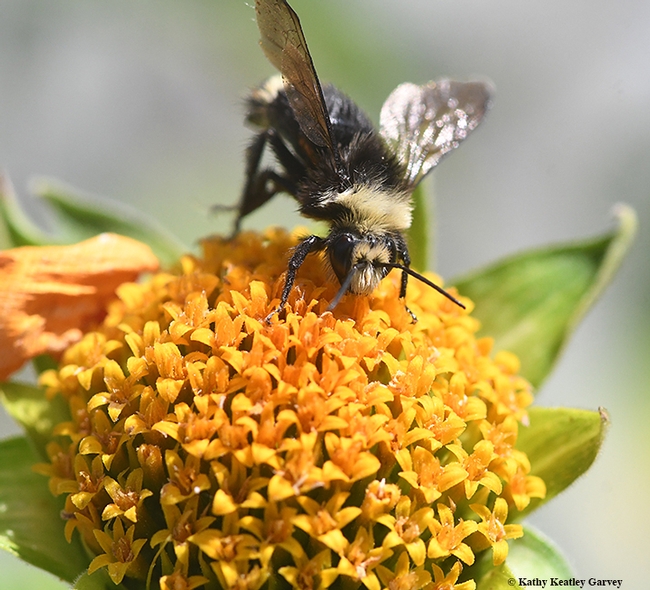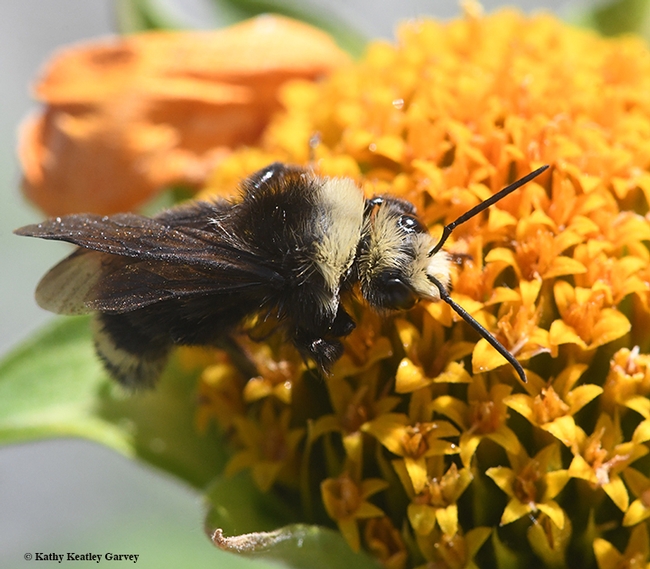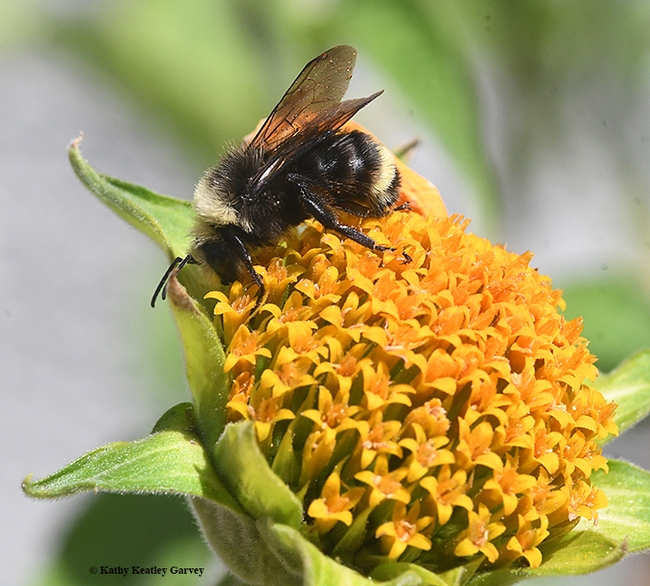- Author: Kathy Keatley Garvey
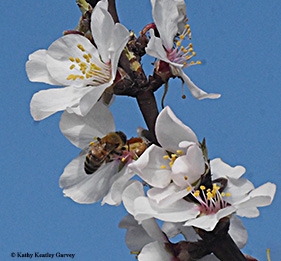
Bumble bees foraging on almond blossoms.
Make that the yellow-faced bumble bees, Bombus vosnesenskii, in Benicia.
Sunday morning as the temperatures soared to 62 degrees in the Matthew Turner Park, Benicia, near the Carquinez Straits, bumble bees competed with honey bees for a share of the golden nectar on the blossoming almond trees.
We witnessed near collisions as lumbering bumble bees lugged incredibly heavy loads while their more streamlined cousins, the honey bees, darted, ducked and dipped to avoid them. Definitely a need for air traffic controllers!
"Bumble bee, bumble bee, cleared for take-off."
"Honey bee, honey bee, stand by."
"Bumble bee, bumble bee, permission to land."
"Honey bee, honey bee, exit runway."
"Bumble bee, bumble bee, line up and wait."
"Honey bee, honey bee, cleared for take-off."
What a sight to see and what a beauty of a day to see bumble bees in Benicia.
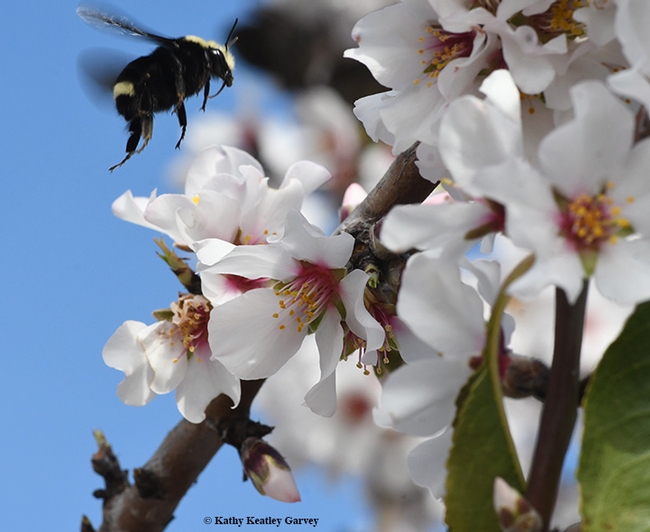
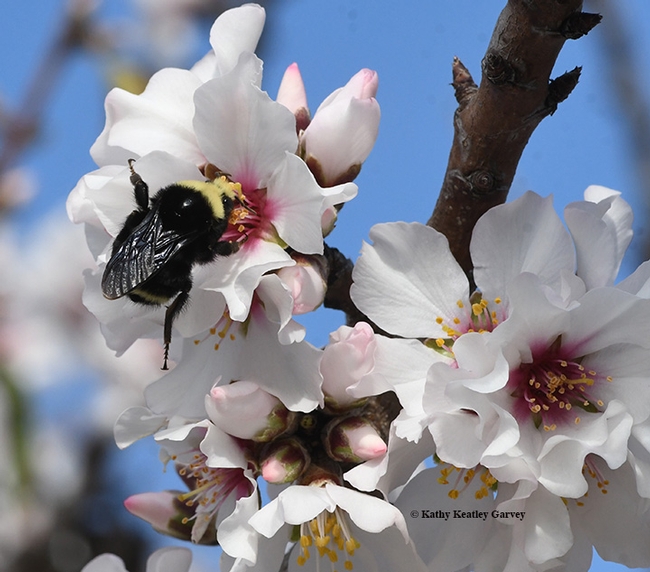
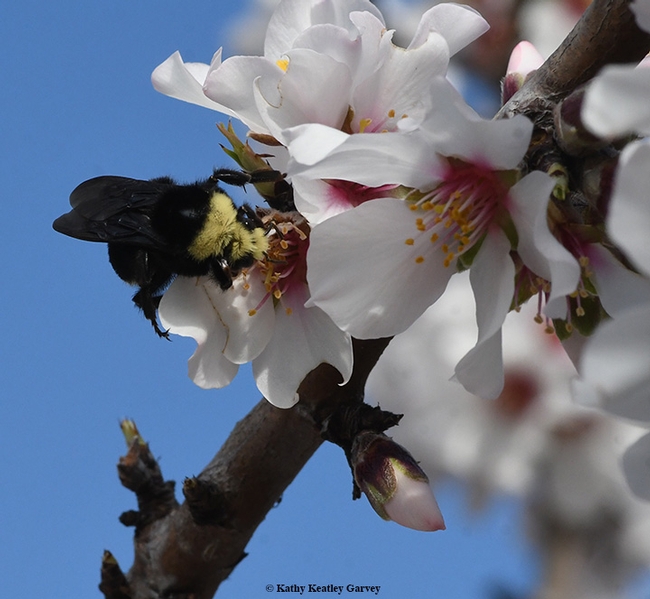
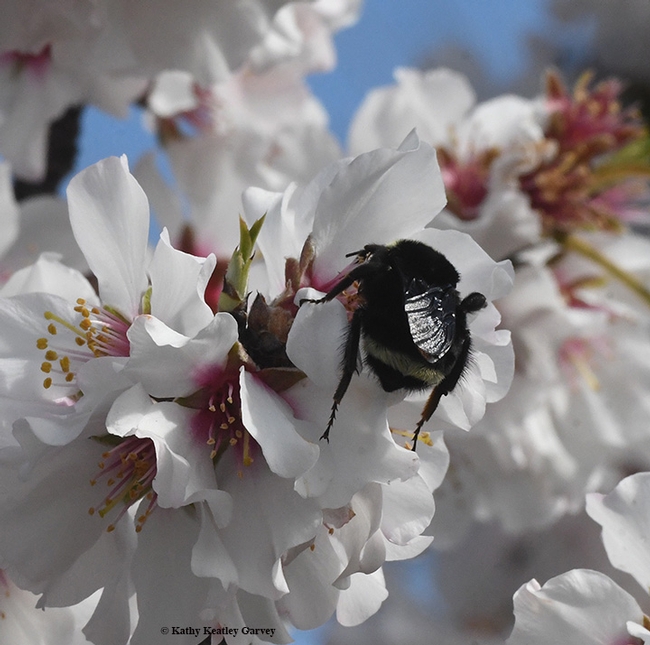
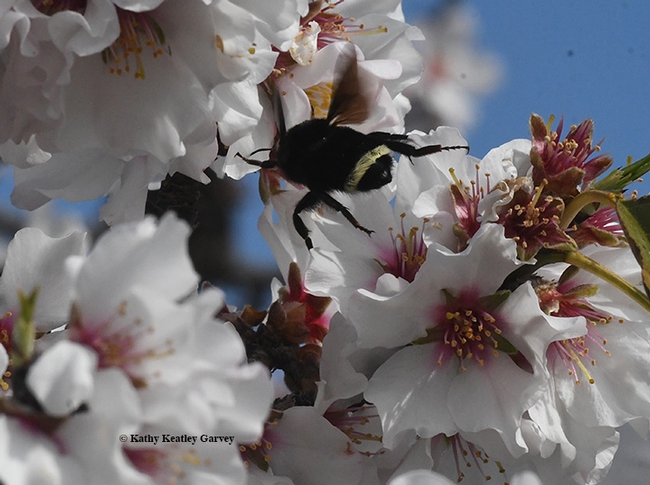
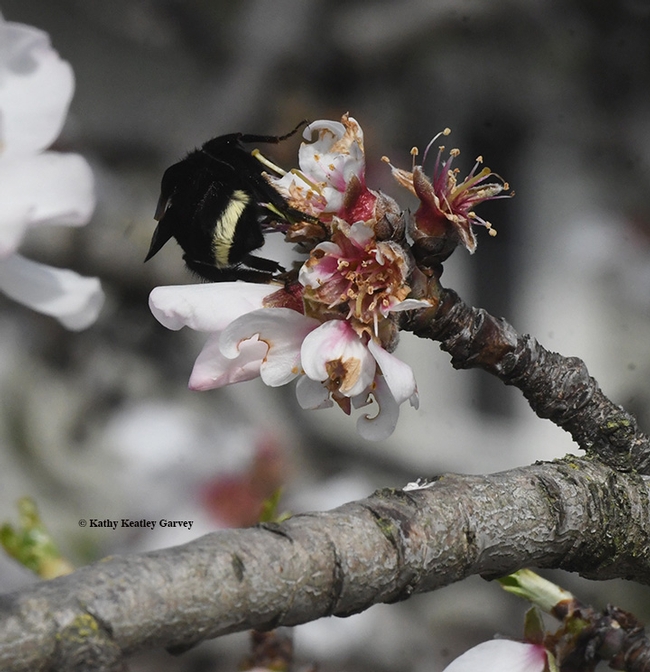
- Author: Kathy Keatley Garvey
It was the morning of Jan. 1, 2018, a year and four days ago.
While strolling the grounds of the Benicia Capitol State Historic Park, we captured images of yellow-faced bumble bees, Bombus vosnesenskii, nectaring on jade, Crassula ovata. They were packing cream-colored pollen from the jade. The same day, we spotted the same species nectaring on rosemary, Rosmarinus officinalis, by the Benicia marina, but packing orange pollen, probably from the nearby California golden poppies.
Thus began our Year of the Insects.
So far this year, we haven't spotted a single bumble bee in Solano or Yolo counties. It's too early in the season (except for hot spots in Benicia, Solano County, where even some almond trees bloom on Jan. 1!)
Nowadays, though, the talk isn't just about "bumble Bees," the insect, but "Bumblebee," the movie, as in the 2018 American science fiction action film. It's about a Transformers' character of the same name, described as "battle-scarred and broken."
Why is the insect spelled "bumble bee," two words? The Entomological Association of America (ESA), in its newsletter, Entomology Today, explains: "...entomologists use two words if a common name accurately describes the order to which a particular insect belongs. For example, all true flies belong to the order Diptera, so true fly names will be spelled using two words by entomologists--house fly, horse fly, pigeon fly, or stable fly, for example. However, despite their names, dragonflies and butterflies are NOT true flies --their orders are Odonata and Lepidoptera, respectively — so they are spelled as one word." (Check out the ESA Comman Names of Insects Database.)
So there you have it: bumble bee, the insect, and Bumblebee, the movie.
And sometimes there's a serendipity moment when the two meet.
We remember back in April of 2017 when native pollinator specialist Robbin Thorp, distinguished emeritus professor of entomology, UC Davis Department of Nematology and Nematology, was displaying bumble bees at a Bohart Museum of Entomology open house.
Thorp, a global authority on bumble bees, is the author of Bumble Bees of North America: an Identification Guide (Princeton University) and California Bees and Blooms: A Guide for Gardeners and Naturalists (Heyday).
So was he ever surprised when in a defining moment, 6-year-old Adne Burruss of Irvine (his mother, Sigrid, is a geneticist and UC Davis alumna) walked up to him wearing a Bumblebee t-shirt. Adne wanted to look at the "other" bumble bees.
So do we! So do we!
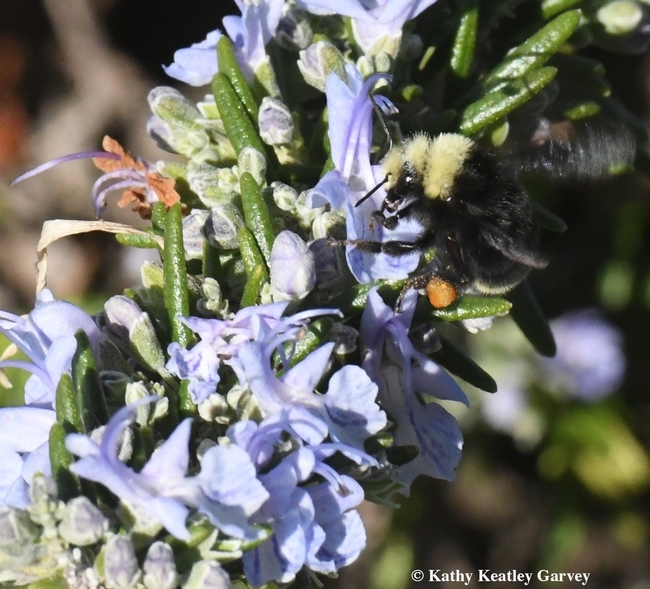
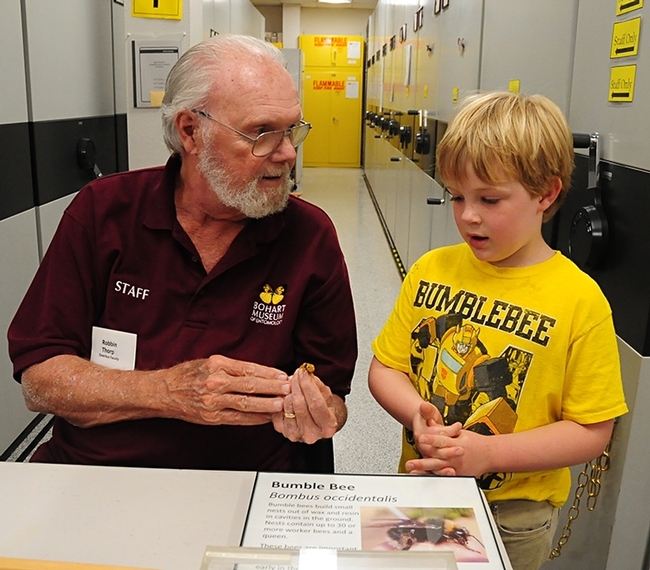
- Author: Kathy Keatley Garvey
"Black Friday" means different things to each of us, but when I think of "Black Friday," I think of black bumble bees nectaring on blackberry blossoms in Berkeley.
Bumble bees on blackberry blossoms in Berkeley. Talk about alliteration!
Specifically, I think of the yellow-faced bumble bee, Bombus vosnesenskii, the bee I photographed on a Friday last spring in Berkeley.
Bombus vosnesenskii is among the bees featured in the University of California-authored book, California Bees and Blooms: A Guide for Gardeners and Naturalists, (Heyday Press). It's the work of entomologists Gordon Frankie of UC Berkeley and Robbin Thorp of UC Davis, entomologist/photographer Rollin Coville and plant scientist Barbara Ertter of UC Berkeley. Thorp, a UC Davis distinguished emeritus professor, also co-authoredBumble Bees of North America: An Identification Guide (Princeton University).
Bumble bees are in trouble. Many populations are declining, threatened or endangered. Take the case of critically endangered--or maybe extinct--Franklin's bumble bee (Bombus franklini), which has probably the most restricted or narrowest range of any bumble bee in the world, according to Thorp, who has been monitoring its population--or trying to--since the 1990s. Its habitat is--or was--a small area of southern Oregon (Douglas, Jackson and Josephine counties) and northern California (Siskiyou and Trinity counties). It frequents California poppies, lupines, vetch, wild roses, blackberries, clover, sweet peas, horsemint and mountain penny royal during its flight season, from mid-May through September.
Thorp hasn't seen it for 12 years. He sighted a total of 94 Bombus franklini in 1998; 20 in 1999; 9 in 2000 and only 1 in 2001. Sightings increased slightly to 20 in 2002, but dropped to 3 in 2003. Thorp saw none in 2004 and 2005; one in 2006; and none since. (See his photo of Franklin's bumble bee.)
In a UC Davis interview in July 2010, Thorp told us: “People often ask the value of Franklin's bumble bee. In terms of a direct contribution to the grand scale of human economies, perhaps not much, but no one has measured its contribution in those terms. However, in the grand scheme of our planet and its environmental values, I would say it is priceless."
"Loss of a species, especially a pollinator, diminishes our global environment,” Thorp said. “Bumble bees provide an important ecological service--pollination. This service is critical to reproduction of a huge diversity of plants that in turn provide shelter, food (seeds, fruits) to diverse wildlife. The potential cascade of effects from the removal of even one localized pollinator may affect us directly and indirectly.”
Many factors, including loss of habitat, are involved. Pesticides must share some of the blame. Interesting that researchers at Worchester (Mass.) Polytechnic Institute recently found that bumble bee exposure to neonicotinoids may be contributing to their decline across America. Even small doses, the researchers discovered, reduce the survival of queen and male bees, which are critical to the survival of wild population. (See Worchester Polytechnic Institute news story.)
Bottom line: if bumble bees disappeared, it would not only be a Black Friday, but a Black Monday, Tuesday, Wednesday, Thursday, Saturday and Sunday.


- Author: Kathy Keatley Garvey
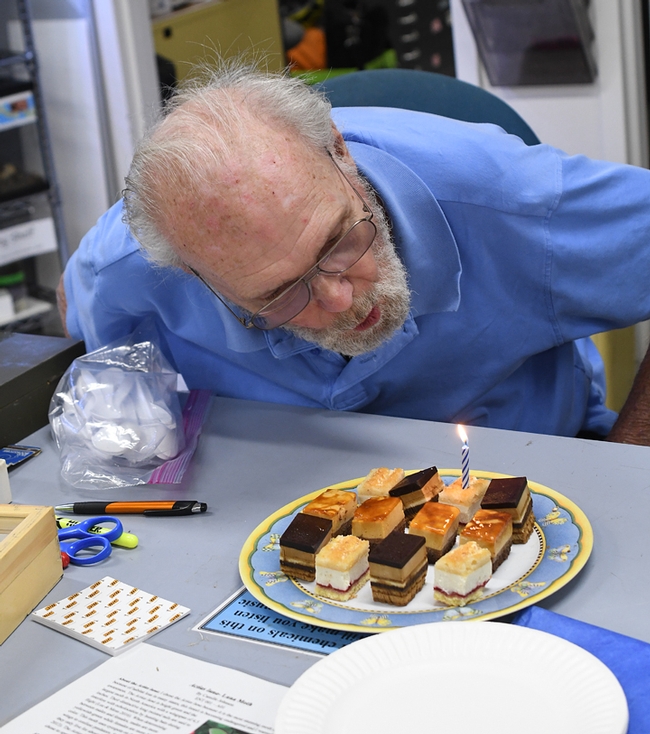
Bohart associates sang "Happy Birthday" and cheered when he blew out a candle on the dessert plate.
For the occasion, doctoral student Charlotte Herbert Alberts, who studies with Lynn Kimsey, director of the Bohart Museum and professor of entomology at UC Davis, drew two longhorned bees on his birthday card envelope--the bees replaced the "b's" in his first name. Tabatha Yang, education and outreach coordinator at the Bohart Museum, coordinated the event.
Thorp actually celebrated his birthday while he was teaching Aug. 18-28 at The Bee Course, sponsored annually by the American Museum of Natural History, New York at its Southwest Research Station, Portal, Ariz. The nine-day intensive workshop draws conservation biologists, pollination ecologists, and other biologists who seek greater knowledge of the systematics and biology of bees.
He is the co-author of Bumble Bees of California: An Identification Guide (2014, Princeton University Press) and California Bees and Blooms: A Guide for Gardeners and Naturalists (2014, Heyday Books). both available in the Bohart Museum of Entomology's gift shop.
Robbin received his bachelor and master's degrees in zoology from the University of Michigan, Ann Arbor, and his doctorate degree in entomology from the University of California, Berkeley. He served on the faculty of the UC Davis Department of Entomology (now the Department of Entomology and Nematology) from 1964 to 1994.
During his long and productive career, Thorp conducted research on pollination of crops pollinated by honey bees, especially almonds. His research also included the use of other bee species in crop pollination, the roles of native bees in pollination of flowers in natural ecosystems such as vernal pools, and the ecology and systematics of native bees. He taught courses at UC Davis in General Entomology, Natural History of Insects, Insect Classification, Field Entomology, California Insect Diversity, and Pollination Ecology, and has given scores of public presentations.
Thorp is a fellow of the California Academy of Sciences, San Francisco (since 1986). Among his many awards: the distinguished team award (shared with Eric Mussen, Neal Williams, Brian Johnson and Lynn Kimsey of the UC Davis Department of Entomology and Nematology) in 2013 from the Pacific Branch of the Entomological Society of America for their collaborative work specializing in honey bees, wild bees and pollination issues through research, education and outreach. Their service to UC Davis at that time spanned 116 years.
Although Thorp retired in 1994, he continues to be active. For many years after his retirement, he researched ecology, systematics, biodiversity, and conservation of bees including pollen specialist bees in vernal pool ecosystems, as well as the role of native bees in crop pollination, the role of urban gardens as bee habitat, and declines in native bumble bee populations. He maintains an office at the Harry H. Laidlaw Jr. Honey Bee Research Facility at UC Davis where he continues his public service. That includes identifying bees for his colleagues. He recently served as a "bee" advisor for Leslie Saul-Gershenz, who holds a doctorate in entomology from UC Davis (2017) and published her first piece in the Proceedings for the Natural Academy of Sciences (PNAS) on “Deceptive Signals and Behaviors of a Cleptoparasitic Beetle Show Local Adaptation to Different Host Bee Species.”
Robbin Thorp is truly a dedicated entomologist who does the University of California proud!
- Read about his work: Robbin Thorp, Distinguished Emeritus Award
- Listen to Extension apiculturist (now emeritus) Eric Mussen interview him about his career.
- Read what CNN wrote about him in its piece on "The Old Man and The Bee" (in pursuit of Franklin's bumble bee, now feared instinct)
Happy "b-day," Professor Thorp! That "b" can stand for bumble bees, honey bees, native bees, carpenter bees, blue orchard bees, leafcutter bees, longhorned bees and more...there are more than 1600 species of undomesticated bees that reside in California.
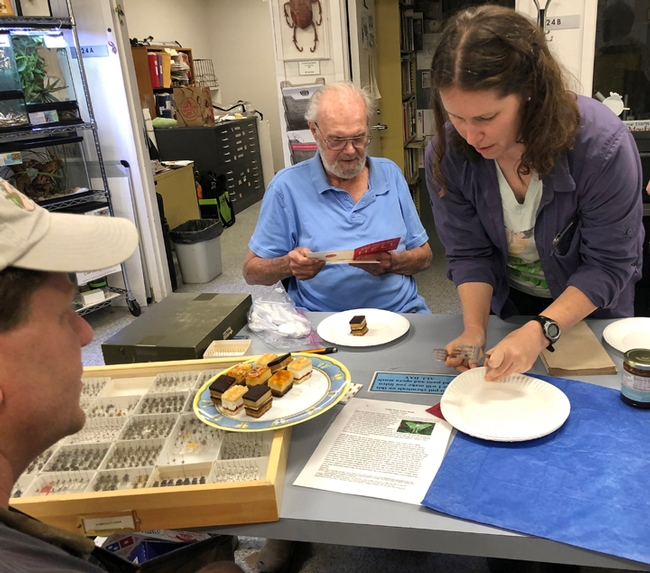
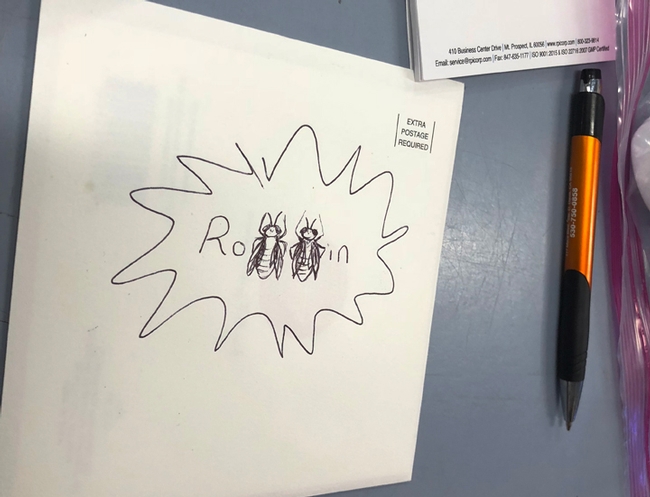
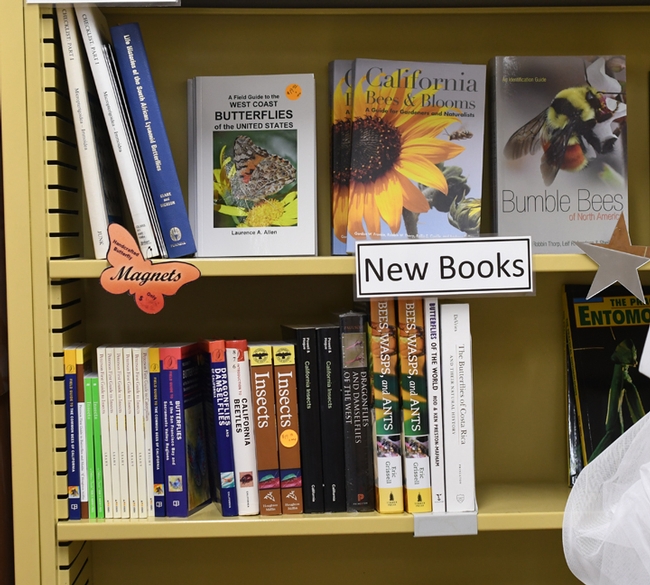
- Author: Kathy Keatley Garvey
Sometimes they barely notice you.
Such was the case of a yellow-faced bumble bee, Bombus vosnesenskii, spotted on our Mexican sunflower (Tithonia).
If a picture is worth a thousand words, what is a bee worth?
Priceless.
If you want to learn more about bumble bees, be sure to check out the landmark book, Bumble Bees of North America, an Identification Guide, co-authored by our own Robbin Thorp, distinguished emeritus professor of entomology at the University of California, Davis. It's the first comprehensive guide to North American bumble bees to be published in more than a century.
Thorp is one of the veteran instructors at The Bee Course, held annually at the Southwestern Research Station in Portal, Ariz. This year's course is Aug. 20-30. (The deadline to apply was March 1.) It's a nine-day intensive workshop offered for conservation biologists, pollination ecologists, and other biologists "who want to gain greater knowledge of the systematics and biology of bees."
